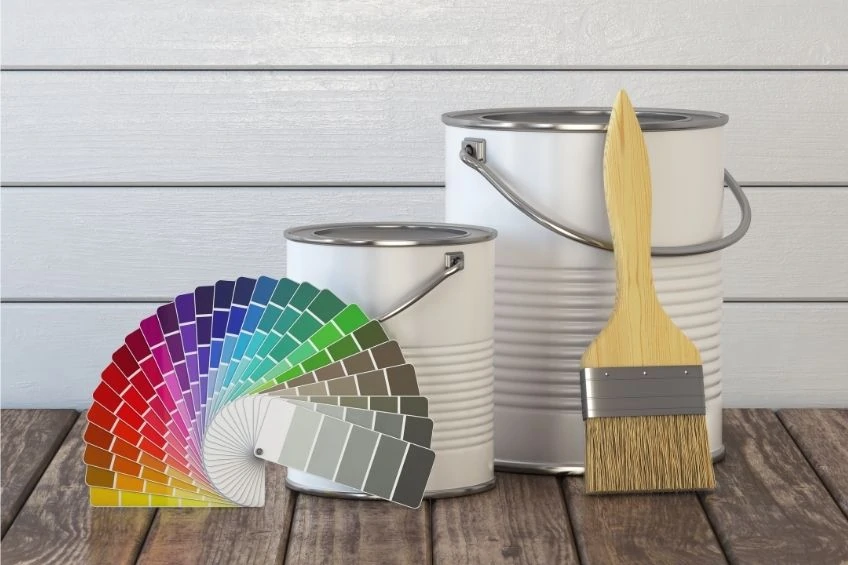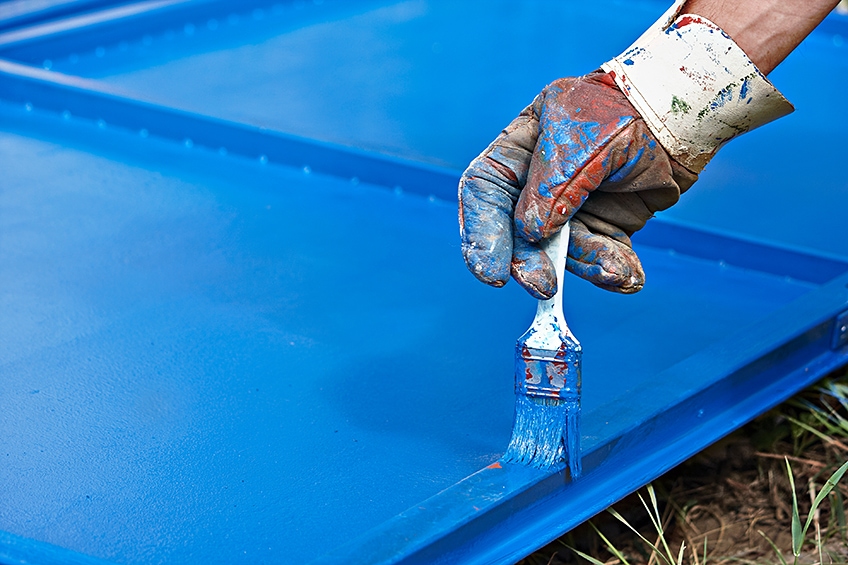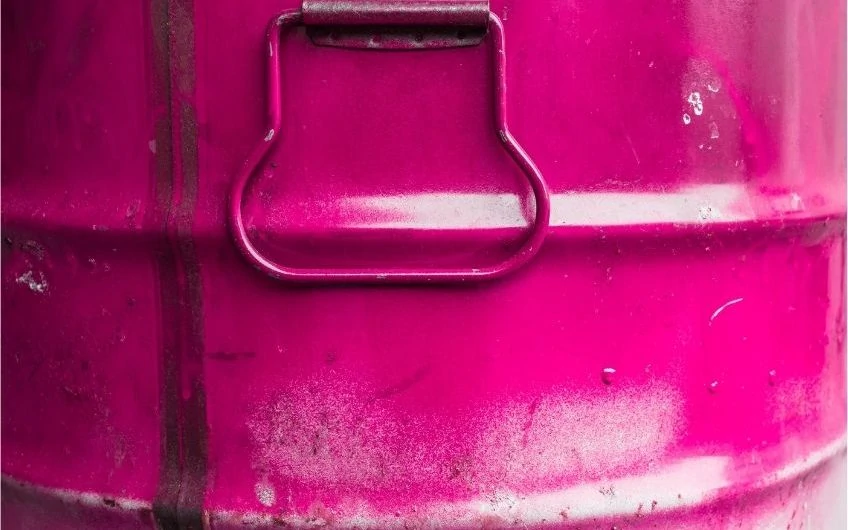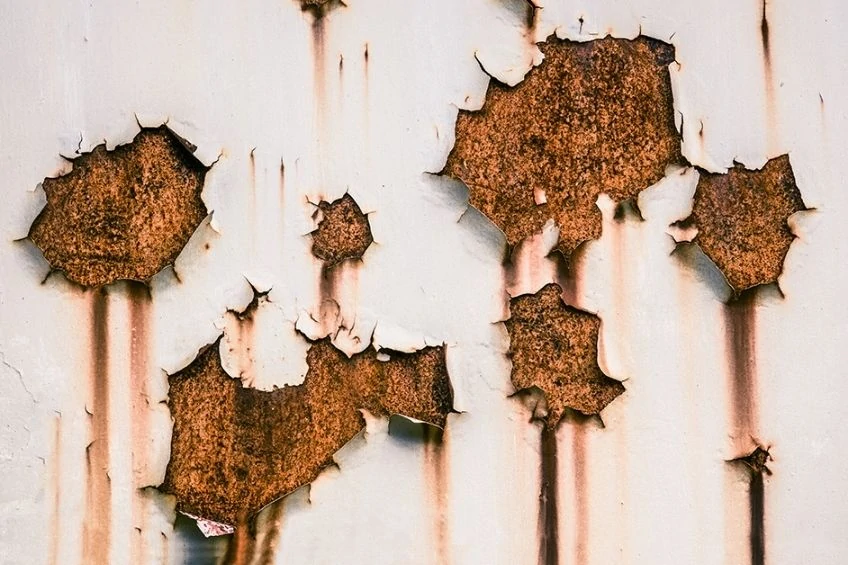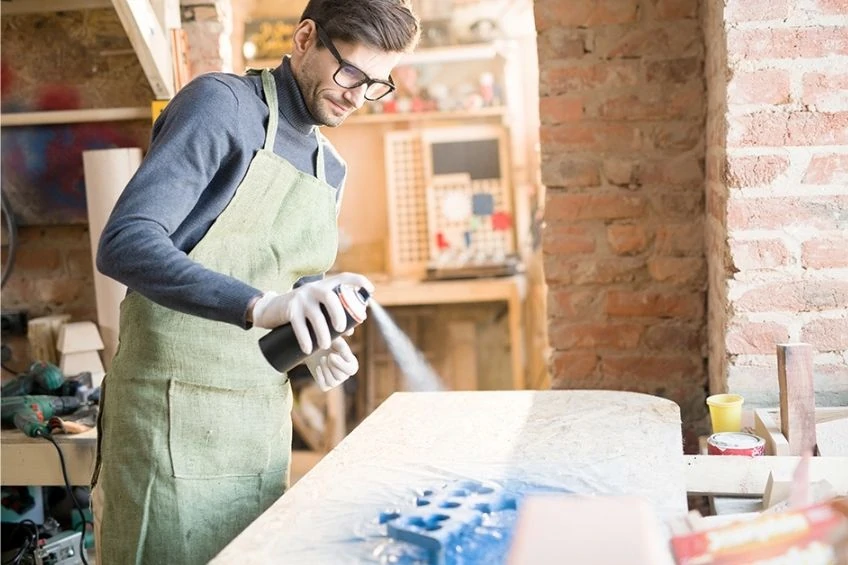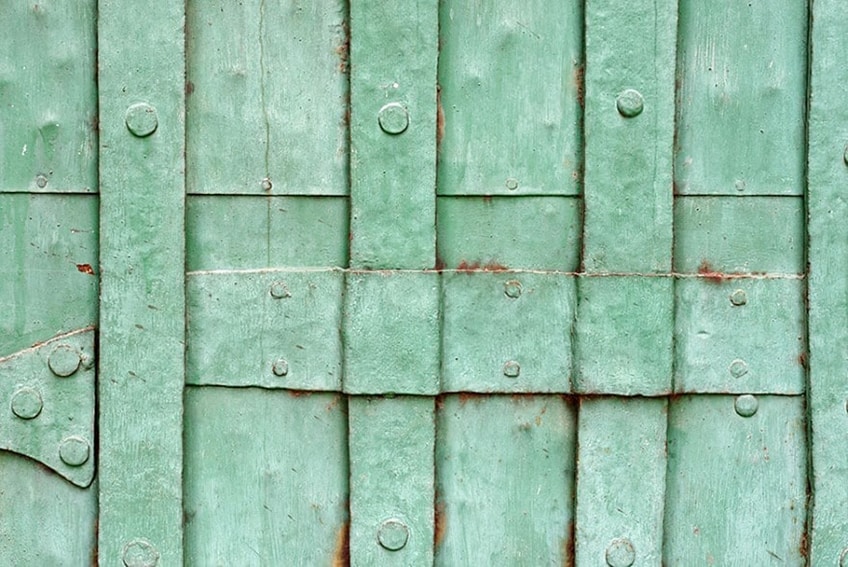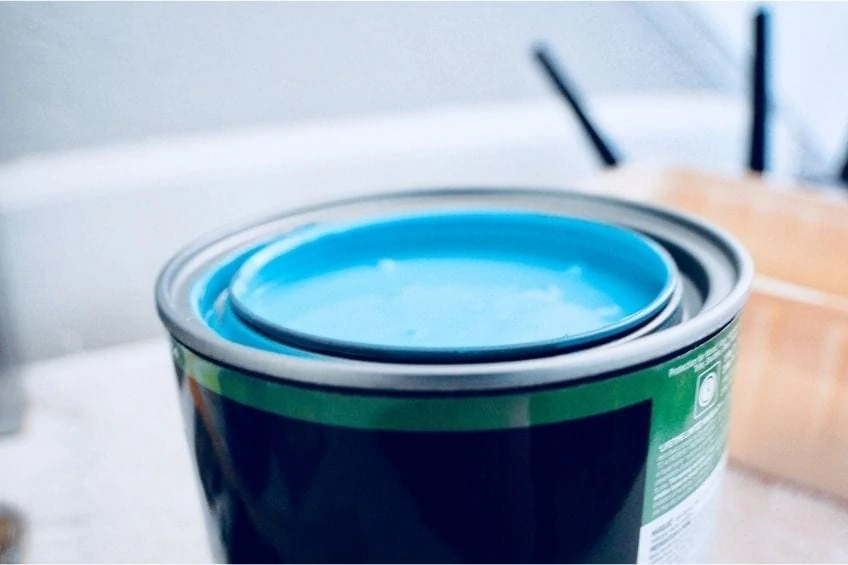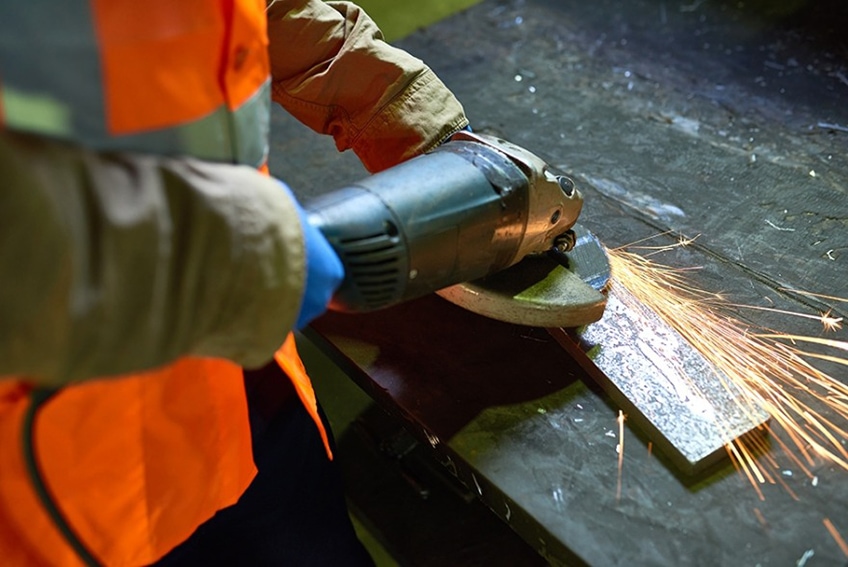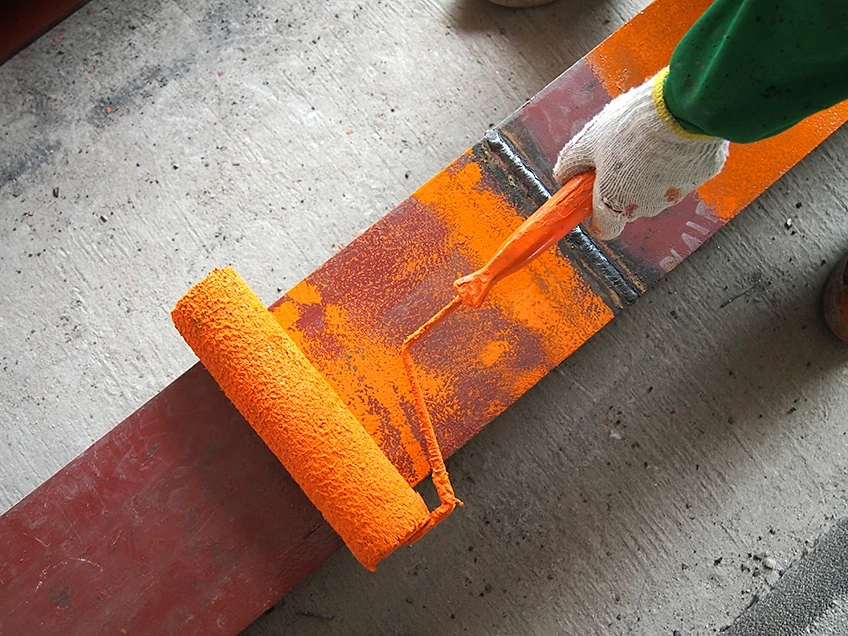Best Paint for Metal – What Paint to use on Metal?
This post may contain affiliate links. We may earn a small commission from purchases made through them, at no additional cost to you. You help to support resin-expert.com
Metal is a versatile material and can be used for functional and decorative features throughout the home. As with all parts of your home you need to take the time to keep your metal strong and looking great. Metal paint is a wonderful tool to breathe new life into your metal surfaces and can also be a great way to protect your metal from the elements. The process of painting metal does not differ much from painting wood or other surfaces, but several important steps can elevate your outcome.
Table of Contents
The Different Types of Metal Paint Available
If you need to paint metal, there are many types to choose from depending on your budget and the type of metal you need to paint. The variety of products available can make it difficult to decide what paint to use on metal for your project. You can use multi-purpose paint which is suitable for metal surfaces, or you can use specifically designed metal paints. Due to brand differences in manufacturing and the specific combinations of ingredients used by each, there can be a lot of variation in both price and quality.
The highest quality paints can be expensive but using cheaper paint on metal can compromise the quality of your final project. Fortunately, there are some budget-friendly options that you can buy, but first, you need to determine which type of paint you need.
There are two broad kinds of metal paint differentiated by either having an oil base or a water base. The details of your project will determine what kind of paint to use on metal surfaces.
Oil-Based Metal Paints are Best for Outdoor Use
Of all the paint for metal surfaces available, oil-based options are thought to be the best paint for metal because they are the most durable. As with all products, there are advantages and disadvantages to using oil-based metal paint. An advantage to oil-based paints is that they are easy to clean and are therefore resistant to staining and other marks. These paints provide a smooth surface and can be used to cover up any existing flaws. Using a primer before applying your metal paint can give you a more even finish, but it is not necessary as oil-based paints can be used without a primer.
Oil-based metal paints can be quite costly because they can fade faster than other types of paint. Another disadvantage of using oil-based paints is that they are highly flammable and have an unpleasant smell. This is because this type of paint for metal is made of alkyds which are plant-based oil, or a synthetic resin combined with pigments and a solvent. It is the solvent that makes the paint flammable and bad smelling; however, the solvent also ensures that the dried paint can withstand water and dirt.
If you need to paint outdoor metal furniture, fences, window frames, or grills then an oil-based metal paint is the best option as it is water-resistant when it dries.
Pros and Cons for Oil-Based Paints
Pros
- Smooth and easy to clean finish
- Water and stain-resistant
- Very durable
- Ideal for outdoor projects
- Even and pigmented coverage
Cons
- More expensive
- Slow drying
- Flammable
- Produces fumes
- Difficult to clean up
- Tends to fade fairly quickly
Water-Based Metal Paints are Best for Indoor Use
Water or latex-based paints are often a preferred type of paint for metal for many people because they are easy to clean and unlike oil-based paints they are fast-drying, non-flammable, and odorless. Metal paints with a water-base are also less likely to fade quickly and they are also more affordable than the other options. These paints are comprised of rubber-based mixtures, vinyl, or acrylics. Another advantage of using water-based metal paints is that your brushes and other tools are easy to clean as the paint dissolves in water.
There are a few disadvantages to using water-based paints, however. Unlike oil-based alternatives, you need to use an oil-based primer when using water-based paints because otherwise, the metal underneath can begin to rust. Latex paints can also struggle to bind to the smooth surface of the metal, and this is another reason why you should consider using an oil-based primer first. For this reason, oil-based paints tend to be more durable than water-based metal paints.
Water-based metal paints are ideally suited to indoor items such as metal bedframes and wall-brackets.
Pros and Cons for Water-Based Paints
Pros
- Fast drying
- Easy to clean
- More affordable
- Less likely to fade quickly
- Ideal for small objects indoors
Cons
- Less durable than other options
- Requires an oil-based primer to adhere to the metal surface
- Can cause rust to form if not used with a primer
Highly Recommended Paint for Metal Surfaces
With so many different products on the market, choosing the best spray paint for metal can be an overwhelming task. Whether it is premium durability, coverage, or color that you are looking for we have compiled a list of our three most recommended products to assist you in completing your DIY project and help you decide what paint to use on metal.
Our Best Value Metal Spray Paint Recommendation: KRYLON Color Master Paint
This is our top pick for the best paint for steel because it provides a clean and highly durable coverage. The Krylon Color Master is available in a wide range of colors and finishes including matte, gloss, satin, and metallic.
- For use on plastic, metal, wood and more
- Perfect for indoor and outdoor projects
- Dries in 10 minutes or less
Not only is this paint ideal for all types of metal, but it can also be used for other materials like plastic and wood. Another great advantage to this paint is that it can be used on metal surfaces both inside and outside the house. This product also comes with a unique conical spray tip which eliminates drips and running.
Pros
- Fast drying (10 minutes or less)
- Long-lasting durable finish
- Ideal for multiple surfaces
- Offers a wide variety of colors and finishes
- Resistant to UV rays
- Ideal for indoor and outdoor surfaces
Cons
- Does not come with any additional art supplies such as stencils
Our Budget-Friendly Metal Spray Paint Recommendation: RUST-OLEUM Painter’s Touch
This is our recommendation for the best spray paint for metal which gives you the most value for money because it works as both a primer and a metal paint. Thanks to the oil-base this paint is ideal for outdoor surfaces and it is resistant to rust, water, chipping, and other forms of corrosion and abrasion.
- Ideal for use on interior/exterior surfaces
- Oil-based formula is low odor, resist chips and provides long-lasting protection
- Dries to touch in 20 minutes and covers up to 12 sq. ft. per can
Another reason why this paint will give you the most bang for your buck is that it can be used on a wide range of surfaces in addition to metal. You can use Rust-Oleum Painter’s Touch on plastic, stone, unglazed ceramics, and plaster.
A single can of this paint can provide up to 12 square feet of durable and clean coverage which dries in around 20 minutes.
Pros
- Combines a primer and paint in one can
- Produces a highly durable finish
- Resistant to water, rust, UV, and other forms of corrosion
- Available in several bold colors
- Easy to use the spray tip
- Provides up to 12 square foot of coverage
- Suitable for a wide range of additional surfaces
Cons
- Less durable on plastic surfaces
Our Premium Choice Metal Spray Paint Recommendation: RUST-OLEUM Stops Rust
This oil-based product is our recommendation for the best paint for metal for outdoor large-scale projects. A single can of paint can cover up to 15 square feet and while it is specially formulated for metal surfaces, Rust-Oleum is also suitable for concrete, stone, and wood surfaces.
- Weather and corrosion resistant coating protects exterior and interior surfaces
- Oil-based formula provides a durable protective coating with excellent rust prevention
- Excellent resistance to abrasion, fading and chipping
This paint is great for indoor and outdoor surfaces alike but its oil-base means that it is resistant to rust, water, fading, and corrosion which can occur outdoors.
Rust-Oleum is available in a wide range of different colors and finishes and is available in a six-pack of paints.
Pros
- Weather and rustproof
- Ideal for both outdoor and indoor projects
- Offers up to 15 square foot of coverage
- Durable finish
- Offers a variety of colors
- UV resistant
- Ideal for other materials
Cons
- Slow drying
- Flammable
Our Best Metal Paint for Brushing: RUST-OLEUM Rust Protective Enamel
This oil-based enamel paint by Rust-Oleum offers superior durability and premium quality. If you are looking for an anti-rust paint that you know will last, then this product is an excellent choice.
- Weather and corrosion resistant coating protects exterior/interior surfaces
- Oil-based formula provides a durable protective coating with excellent rust prevention
- Excellent resistance to abrasion, fading and chipping
This paint offers excellent resistance to fading, abrasion, and chipping. The paint dries to a glossy finish – adding an attractive shine to various surfaces. However, this paint is also available in a semi-gloss or flat finish version.
An important feature of this Rust-Oleum paint is its incredible weather-resistance. The corrosion-resistant coating makes this paint ideal for outdoor and indoor use, and it can protect a wide variety of surfaces. This includes wood, masonry, concrete, metal, and more.
If you are after a durable, and rust-resistant paint, then this is a great option for anyone seeking a strong finish. The paint both looks great and offers superior durability and resistance to the elements.
Pros
- Weather and corrosion-resistant
- Fast drying
- Each can covers a pretty large surface area
- Excellent rust prevention qualities
- Resistant to abrasion, fading, and chipping
Cons
- Not suitable for high heat surfaces
- The thick consistency can make it difficult to get perfectly even coats
Things to Consider When Choosing the Best Metal Paint
Metal is highly adaptable and can be used to make many different objects. Some projects will require specific qualities in metal paint such as heat resistance or paints that are tailored to a particular metal. Here we provide some suggestions to help you find the best paint for metal for your unique project.
Heat, Moisture, and Other Extreme Conditions Require Durable Paints
The two most common extreme conditions that you should consider when buying your metal paint are those of heat and rust.
Metal is a very conductor of heat which is why it is used in radiators and grills. When attempting to paint metal surfaces that may be exposed to high temperatures it is necessary to have paint that is heat resistant. The Rust-Oleum High Heat Spray paint is an ideal option for painting metal surfaces that will be exposed to high temperatures.
Rust is one of the biggest problems you face when working with metal, particularly when your project is outdoors and exposed to the weather. Ideally, you should try to prime any outdoor metal before applying paint because this will make the paint more durable and resistant to moisture. Ideally, you should use an oil-based paint and primer. The Rust-Oleum Painter’s Touch is an ideal option if you are on a tight budget as it includes paint and primer in one.
To Spray or Not to Spray, that is the Question
Broadly, metal paints are available in two forms; a tin or a spray can. The form you choose depends on the particular surface you are planning to paint.
If the surface you want to paint is large and flat like a table or a wall, then paint in a can is a good option. You can easily use a brush or a roller to apply this paint evenly to large surfaces. You can typically get larger quantities of the best metal paints in tins than you can in a spray can too which is ideal if you have a large surface area to cover.
Smaller and more irregularly shaped surfaces like metal chairs or bed frames can be easier to paint with a spray can. Not only does a spray can allow you to get more coverage in the nooks and crannies but you will also avoid leaving brush streaks and it will be much quicker.
To ensure your paint job is as durable as possible it is always a good idea to use a primer on the metal surface before painting, particularly if the surface will be exposed to moisture. It is possible to buy some paints as a combination of primer and paint in both a tin and spray can. To be sure of how to apply your paint, always check the directions first.
Achieving the Best Finish
Most of the best paints for metal are available with several different finishes with some examples including gloss, matte, flat, or satin. The finish depends on the kind of metal you are painting, the type of paint you use, whether you use a primer or not, and the thickness of the paint.
If you are looking for the best paint for steel, then you will generally use oil-based or enamel paint. These produce hard and durable finishes which may not be what you are looking for. You can find specialized paints with different finishes online. Other common metal surfaces like ferrous metals, galvanized metals, and aluminum all require paints that are designed to stick to their surfaces properly to achieve the best possible coverage.
If you are using water-based paint it is best to use a primer before painting so that you can get the best finish possible. Water-based metal paints containing latex and acrylic ingredients can struggle to adhere to the smooth metal surfaces and this can cause the finish to be irregular. A primer will ensure the paint applies evenly to your surface.
The thickness of the paint you apply to your metal surface will also influence the quality of your finish. You will likely need to apply a few coats of most metal spray paints as with any paint. Some metal spray paints can be too thin however so if you are struggling to get even coverage with many applications it is best to try a different paint.
Making the Painting Process as Quick and Easy as Possible
While painting can be wonderfully therapeutic, you still want to get the job done as quickly and smoothly as possible. Choosing a paint that will dry quickly and a spray can that is comfortable and easy to use will greatly improve your metal painting experience.
Oil-based paints tend to take longer to dry than those with a water base, but you can get some oil-based metal paints like the Rust-Oleum Painter’s Touch which dry much faster. Faster drying paint means that you can apply several coats in a shorter amount of time.
While an uncomfortable spray can is not a deal-breaker if you are painting a large area with a spray can it can be helpful to have one that is specially designed to be more comfortable and less strenuous on your hands. Look out for sprayers with a pistol grip design as these are more comfortable. Additionally, spray cans that have a wider finger tab can reduce the strain on your thumbs when spraying for a long time.
Your Definitive Guide to the Process of Painting Metal
So, you have your high-quality metal paint and primer and you are ready to paint! Before you get started you need to make sure that your working area is properly set up, your metal surface is prepared, and you are primed and ready to go. If you fail to prepare properly you can end up wasting your time and money, so it is well worth putting in the effort.
Preparing Your Working Area
Just as you would arrange your desk for optimum efficiency, a well thought out working area is essential for a smooth painting experience. Ensure that you have all of your tools ready and available to you and that your workspace is clean and tidy to avoid dust sticking to your paint. If you are using oil-based paint with solvents that produce fumes it is even more essential that you work in a well-ventilated area. It is also advised that you wear a mask and eye protection while you clean and prepare your metal surface for painting.
Cleaning Your Metal Surface
To ensure that your finish is smooth and slick you need to properly clean and prepare your metal surface. Examine the metal for any old peeling paint, any dirty marks, or grease. For your safety, you are advised to wear a mask and clean the surface in a well-ventilated area.
If you find old chipping and peeling paint you can gently remove this using a scraper, a wire brush, or sandpaper. Some people may suggest using a power tool; however, this should be taken with caution as it can damage the metal surface and make it difficult for the paint to adhere properly.
For an already painted surface without any feeling or chipping, you can start by using a clean cloth to wipe away any dirt. Next, you can remove any gloss from the paint by sanding the surface gently and wipe away the dust with a small amount of mineral spirits. If there are any very dirty marks you can use a specialized metal surface detergent to remove these. If the metal is fairly new and covered in grease you can easily wipe it off with some mineral spirits.
To remove any slightly rusty areas on the metal you can use a metal wire brush or sandpaper. After you have removed the rust you can apply a specialized rust-proof primer to protect the metal from further damage.
Priming the Metal Surface
Priming your metal surface is a very important step, especially if the metal in question is going to be outside or subjected to any moisture. If you are using a water-based metal paint it is even more important to prime the surface beforehand because the water-based paint is not water-resistant, and any moisture will cause the metal to rust.
The best options are oil-based rust-resistant primers. Galvanized primers are useful for metal surfaces that do not easily hold onto the paint. If you are painting on steel or iron surfaces you can use zinc chromate and iron oxide primers. Ideally, a primer should be applied to any metal before painting, regardless of whether it is inside or outside.
At this point, you should also take care to repair any dents or holes in your metal. Begin by sanding the area down until you reach the metal below. Clean the area with some mineral spirits and a degreaser to remove any dirt and dust. You can then fill smaller holes with epoxy and larger holes can be filled with an epoxy filler followed by a fiberglass mesh. The mesh should be slightly larger than the hole you are trying to cover. Then you can cover the fiberglass mesh with the epoxy working from the outside in.
The Time has Come to Apply the Paint
Depending on your preferred method of application you can now apply your paint to your metal object. Depending on the thickness of your paint you may need to apply several layers. Each layer should be thoroughly dry before applying the next. After the final coat, your painted metal should be left to dry overnight before you handle it.
For added protection and longevity you can apply a lacquer sealer after your final layer of paint has dried. This additional, and optional step will add a lovely shine to your painted surface. Metal is a daunting surface to paint, but with the right preparation and the right tools, you can easily handle any DIY project!
View our Painting Metal web story here.
Frequently Asked Questions
What is the Most Effective Paint to Use on Metal Surfaces?
There are many types of paint for metal and this article will guide you on how to choose the right one for your project. For longevity and durability oil-based metal paints are the best and most effective options. For outdoor projects and surfaces that will come into contact with moisture, oil-based paints are the best choice. These paints can take a long time to dry however and do produce some unpleasant fumes. Water-based paints can be equally as effective but require additional preparation in the form of an oil-based primer to protect from rust.
Do I Need to Prime my Metal Before Painting it?
It is suggested that you always prime your metal surface before painting simply because it protects the metal from rust and increases the durability of the paint. You can purchase some metal paints which are formulated to include both a primer and the paint in a single application and these can be effective.
Must I Sand the Metal Surface Before Painting?
When preparing the metal, it is advised that you sand the surface if there is still some residue, old paint, or rust. Sanding creates a more even and smooth surface which makes the application of the paint easier and ensures the longevity of the paint.
How Many Coats of Paint do I Need to Apply?
It is best to follow the directions on the paint can as each type of paint for metal differs slightly. It may be necessary to apply several coats to achieve the right finish. Generally, however, two coats of primer and three coats of paint should be enough.
Can I Paint Over Rust?
You can paint metal with rust, but you need to ensure that the rust is not loose. Sand down the area first and then apply a rust-resistant primer or another product to protect against rust before you apply your paint.


